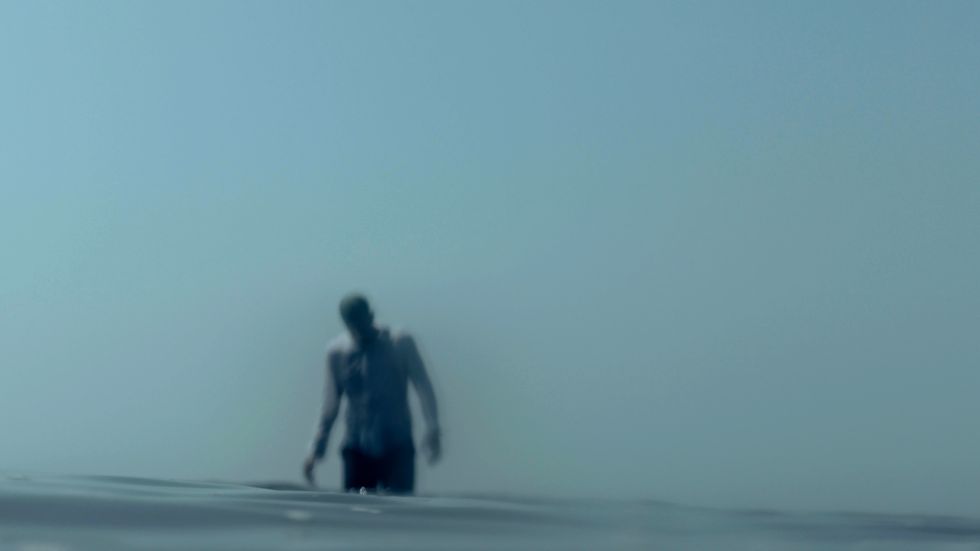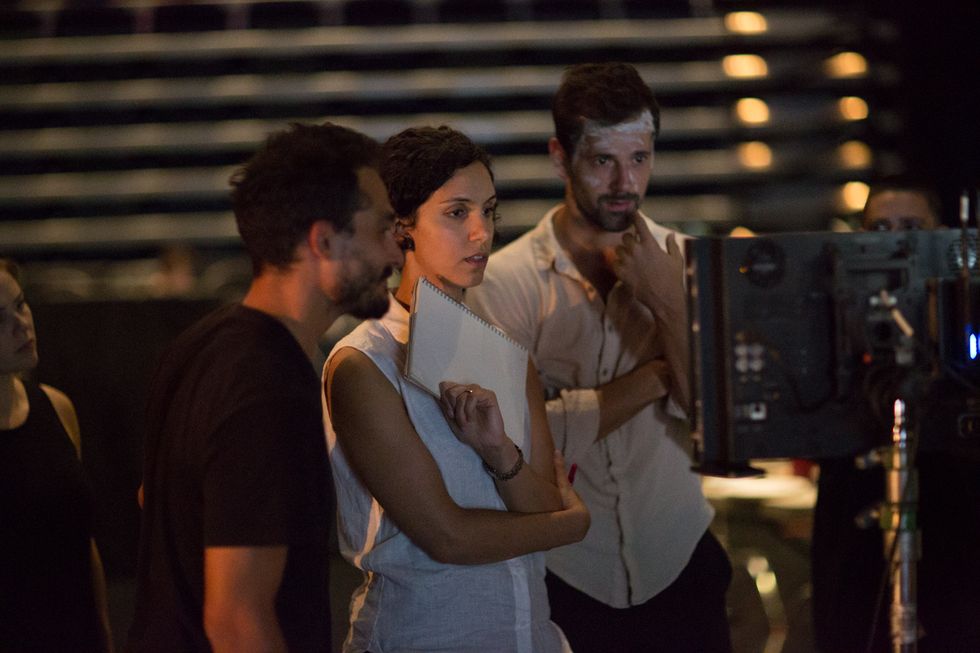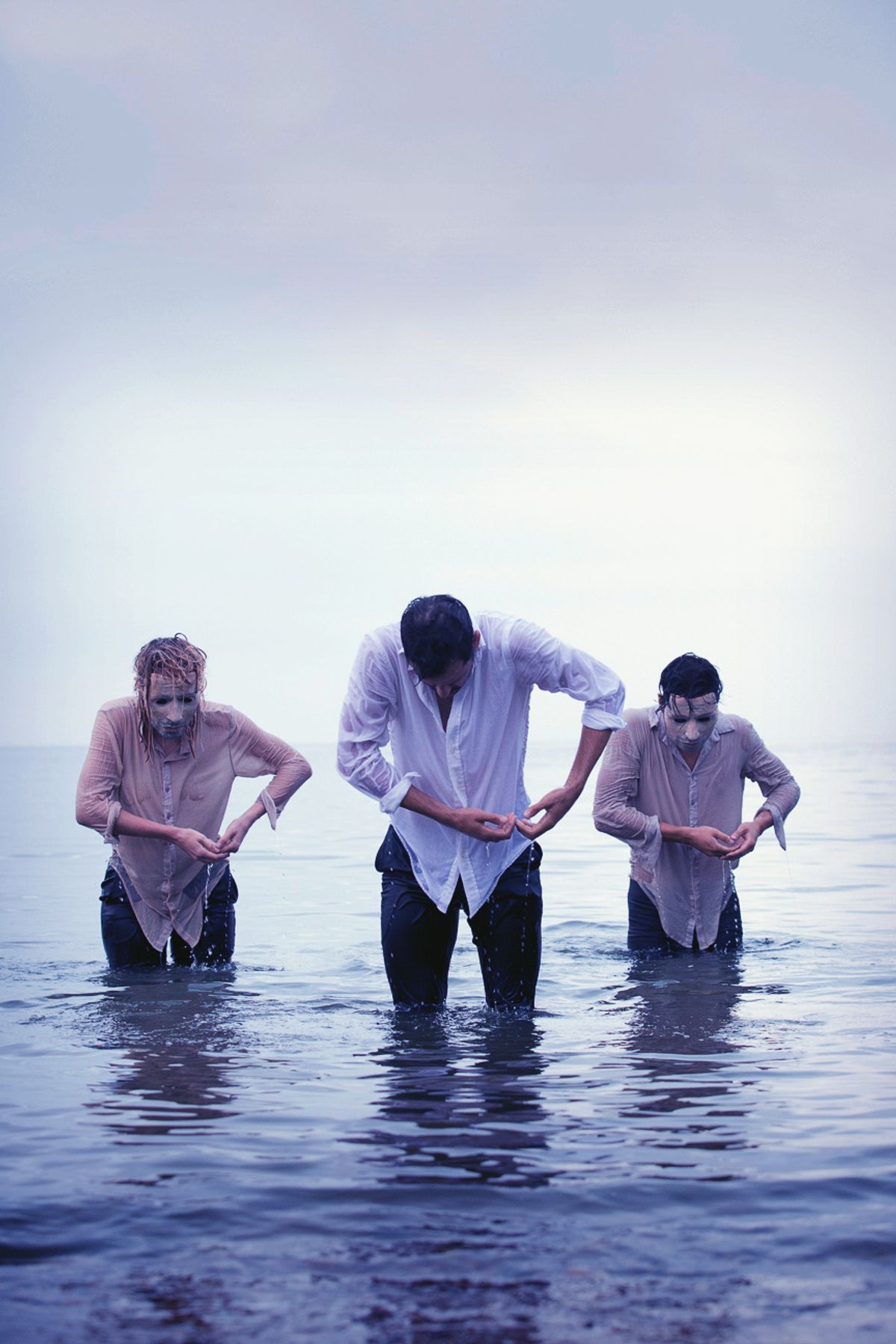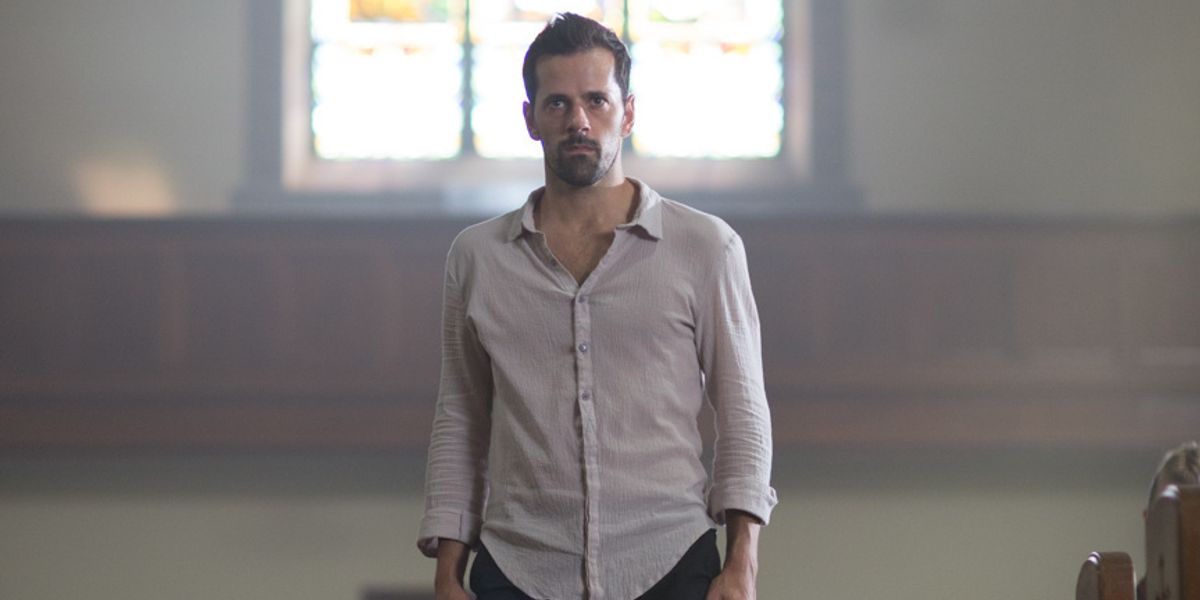An Exclusive, Inside Look at Robbie Fairchild's New Film, In This Life
Back when Robbie Fairchild graced the cover of the May 2018 issue of Dance Magazine, he mentioned an idea for a short dance film he was toying around with. That idea has now come to fruition: In This Life, starring Fairchild and directed by dance filmmaker Bat-Sheva Guez, is being screened at this year’s Dance on Camera Festival.
While the film itself covers heavy material—specifically, how we deal with grief and loss—the making of it was anything but: “It was really weird to have so much fun filming a piece about grief!” Fairchild laughs. We caught up with him, Guez and Christopher Wheeldon (one of In This Life‘s five choreographers) to find out what went into creating the 11-minute short film.
How it all started
“I met Robbie while directing films for Lincoln Center,” says Guez. “He was featured in one, and we got along really great and kept in touch over the years. He was between projects, so I actually approached him about doing a dance film last spring. When we got together he said, ‘You know, I really want to do something darker.’ ”
It was Fairchild’s idea to explore grief and loss, reacting, in part, to a rash of celebrity suicides that had been in the news. “Dance has the unique ability to convey certain emotions that you can’t put into words, so I thought to myself, What aspect of our humanity deals with really deep stuff that you can’t verbalize? The first thing that came to mind was grief,” Fairchild says. “How do you put into words the feeling of loss over someone you’ll never see again, a relationship that will never be again, part of yourself that will never be again?”
“Grief is uncomfortable,” adds Fairchild. “That’s why we don’t talk about it a lot. I hope that this film can make this experience in our lives, that we all are going to go through, a lot less lonely and solitary.”

Still from the “Bargaining” section of In This Life
Courtesy Michelle Tabnick PR
What it was like being involved on both sides of the camera
“My posture got really poor!” Fairchild laughs. “So many emails, so many emails it’s crazy. From raising money, to coordinating everybody’s schedules, to finding rehearsal space…
“It’s interesting, when you’re not relying on other people’s creative ideas for your employment, you kinda have to think to yourself, What do I want to say now? The first time we were all in rehearsal together, I thought, This is so crazy, this is the first time I’ve been in the studio working with people where the only reason we’re here is this idea I had.
“It felt very comfortable, and not like, ‘Oh, I’m doing somebody else’s stuff.’ I knew exactly how I wanted this to be, and it was really fun to feel that free.”
Drawing from life
While his In This Life character’s source of grief is left purposefully vague, Fairchild was drawing on the rapid changes in his own life around his departure from New York City Ballet. “I went through my own personal growth—so much change had happened when I was in London, and then I came back to New York City and was trying to assimilate in this new world, post-ballet company. It’s not about the ballet company, but about me grieving the life I had before. I’m happy to have my life now, but I had this whole other life. And then it flipped, and my passions went towards other places. This film is a way of celebrating where I’m at now, but also acknowledging the death of the previous life.”

Director Bat-Sheva Guez (center) and Fairchild on the set of In This Life
Courtesy Michelle Tabnick PR
Pooling their resources
Unusual for a short film, five choreographers—Warren Craft, James Alsop, Andrea Miller, Christopher Wheeldon and Fairchild himself—contributed, one for each phase of grief. “It gave us the opportunity to play with wildly different choreographic styles, which is very exciting to both of us,” says Guez. For scenes calling for more performers, Fairchild reached out to dancers he already knew.
“I’m used to being a very auteur-style director,” Guez adds, “so I have everything mapped out in my head, exactly how it will look and feel, before I approach any collaborator. In this case, Robbie and I had a general sketch of what each scene was going to be like, and then we brought it to the choreographers and they would add to it, and often take it in whole new directions. It was spitballing back and forth, and then a lot of what I had to do as the director is kind of shape it.”
The difference between dance on film and dance onstage
“When ballet donors would come to the studio and watch the creation of a piece,” Fairchild says, “they would often say, ‘I almost love this more than the performances! I’m so close, I get to see the work, the nuances in your faces and the breath and the closing of your eyes and what that means.’ I feel like, in dance on film, you give the audience the experience of being in the room with you.”
“I really believe in choreographing the camera like it’s another dancer,” says Guez. “The visual information that you withhold is more important than the visual information that you show. When you are watching a performance on a stage, you, the viewer, decide where you want to look. As a dance filmmaker, it’s my job to show you where to look and to point you in the right direction. For In This Life, with each different choreographer and each different dance style it was a very different way of telling the story and a very different way of deciding what we show and what we don’t show.
 Bat-Sheva Guez
Bat-Sheva Guez
Courtesy Michelle Tabnick PR
“I brought a camera to every single rehearsal, and then went home every night and edited so we could figure out how the camera blockings would work. And then my cinematographer and I would meet for hours and dance around my office with the edited footage and my camera, and figure out how to show the story.”
It ultimately varied from scene to scene, with Guez adapting both her equipment and process to how the choreographers liked to work:
I. Denial
The opening section of the film sees Fairchild in a sparse apartment, huge windows overlooking a distant city skyline as he seems to vibrate out of his skin. The choreographer for “Denial” is Warren Craft, who incorporates butoh into his practice. “It looks like the body is breaking down,” says Fairchild. “It looks like the skeletal structure is glitching.” Fairchild was interested in pairing that with denial because “your body never lies, but your mind will try to take over. The idea is that denial is your effort to hide or run away from reality.”

Fairchild in a still from the “Denial” section of In This Life
Courtesy Michelle Tabnick PR
II. Anger
Fairchild and Guez initially struggled with where to set the “Anger” section, bouncing around ideas like a night club or an alleyway before commercial choreographer James Alsop suggested a solution. “Nothing felt right and we were banging our heads against a wall. When we went to James, she said, ‘You know, when I think of anger, I think of church,’ and we both got chills,” Guez says. “And then I was like, ‘How are we going to find a church?!’ ”
There are more dancers involved in this section than any other, which created new challenges for Fairchild as he worked on both sides of the camera. “I would have to look at the playback and give corrections for people to be together, and we had so many more shots and so many more people, so that was more complicated.”
III. Bargaining
“Bargaining,” choreographed by Andrea Miller, is one of the most affecting scenes—and it was also one of the most challenging to film. Miller had the idea of setting it in a body of water, since she thought of bargaining as being similar to trying to hold water in your hands, and offered up a private beach in Connecticut she had access to through her family. “We didn’t have megaphones, so I was in the water up to my waist, just shouting,” Guez describes. “Our cinematographer is in a wet suit, the camera’s in a splash bag. It’s not a fun way to work. The water was cold and the rocks were so sharp that everyone got cut up even though we were wearing water shoes. But it was so fun, I came home covered in mud and blood and salt. My production company is called Adventure Pants for a reason!”

Heather Lang, Fairchild (center) and Michael Rosen in the “Bargaining” section of In This Life
Courtesy Michelle Tabnick PR
“It felt really cathartic,” Fairchild adds. “Andrea’s choreography really has the process of trying, and repetition, and it was so interesting to me to represent bargaining as a cycle of thought, the hamster wheel.”
IV. Depression
“What I thought was most exciting about depression was embodying it as a weight, as a shadow,” says Guez. “What would it be like if we turned that into a human?” The result is a claustrophobic duet between Fairchild and a masked Martha Nichols that takes place when Fairchild’s character excuses himself from a date to have a breakdown in the bathroom.
“It was important for part of the piece to have a dance with another person,” adds Fairchild. “And no one makes a pas de deux like Christopher Wheeldon.”

Martha Nichols and Fairchild in the “Depression” section of In This Life
Courtesy Michelle Tabnick PR
“It was filmed in a very restrictive space,” says Wheeldon, “so we had to figure out ways it’ll be up and down, not being able to really cover ground with movement. But that also worked with the idea of the restrictions of depression, and Martha as this kind of Sisyphean weight on Robbie’s shoulders. It called for creating this sense of weight rather than weightlessness, and creating a feeling of effort rather than ease, which of course is what we’re so used to doing.
“We only had one morning in the studio together, and it only ended up adding up to 30 to 50 seconds of dance itself, but I did go along for some of the filming to help. The bathroom was tiny. There was barely even room in there to actually achieve what we choreographed. It was quite comical in a way: There we were, director, two dancers, choreographer, crew, assistant director, director of photography, all kind of crammed into this tiny New York restaurant bathroom. At one point I was standing on the loo to get out of the way so I could see what they were doing without being in the way of the camera!”
V. Acceptance
Though the initial idea for “Acceptance” was for Fairchild to dance a duet with a video of himself projected onto layers of fabric, the collaborators found that, in practice, the simplest solution was actually the best one. “I had spent several weeks playing with different layers of fabric with my production designer, trying to figure out how that sculpture was going to work,” says Guez. “And then we brought Robbie into the space, and he said, ‘What if I just peel them back?’ ” Fairchild pieced together bits from the other choreographer’s sections to create the sequence his projected self performs.

Fairchild in a still from the “Acceptance” section of In This Life
Courtesy Michelle Tabnick PR
“I feel like acceptance isn’t about sunshine and rainbows and happiness at the end of the journey,” Fairchild muses. “I think it means realization of the grieving process, that you’re different now than you were before. No matter what loss you’re going through, you’re a different person at the end of that journey.”
“It’s like a shedding of the old skin,” Guez agrees. “We’ve grieved for the loss of the person we once were, the person we hoped to be. We grieve for the loss of the future that we envisioned for ourselves. It’s like a passage where the older, wiser, kind of hardened version of ourselves emerge.”
Reaching a wider audience
Though In This Life has so far only appeared at film festivals, the aim is to eventually release it online. “In solitary moments, most of us scroll through social media,” says Fairchild, “and so the hope is to catch the viewer there, and allow them to see grief physicalized so they feel a little less alone.”




